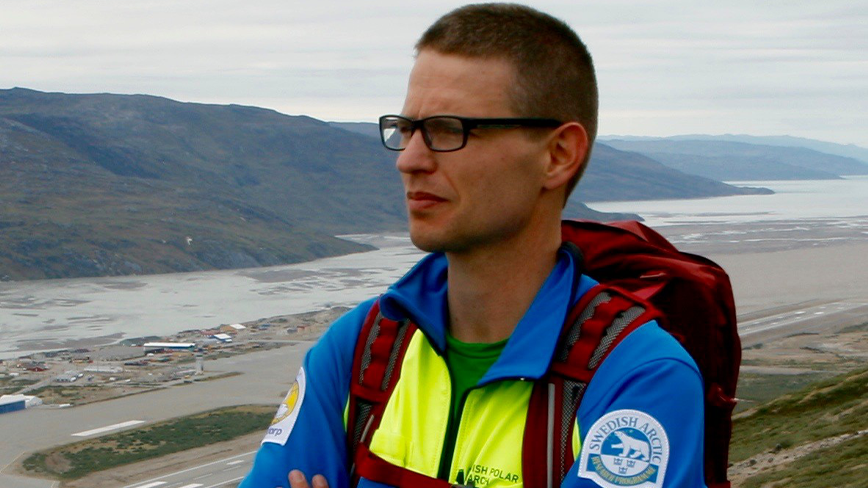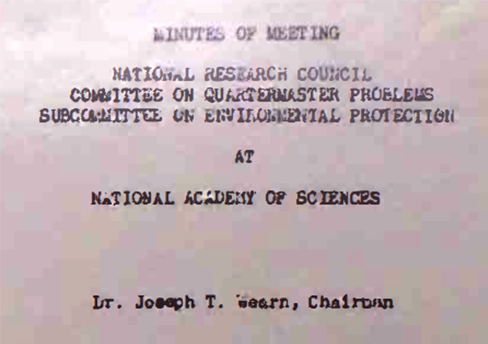How do we think about environmental issues in the Arctic and Antarctic?

In February 2017, historian Peder Roberts and colleagues started the ERC project "Greening the Poles: Science, the Environment, and the Creation of the Modern Arctic and Antarctic". The research group wanted to understand how and why the world viewed the polar regions from the 1940s onwards. They ask questions such as "What connection do debates about resource extraction have to broader questions about sustainability? Can we think of research programs as colonial instruments? And why were national parks and conservation agreements politically useful?” The five years have been filled with a lot of empirical research and searching among written sources in archives over the world.
“We have been to Chile, Argentina, Japan, Canada, Great Britain, USA, France, Norway, Russia, yes, everywhere,” says Peder.
The idea for the project came to Peder when he was in an archive in Columbus, Ohio, and read documents from the 1940s from a US military branch called the Quartermaster Research Command, which frequently mentioned the concept of environmental protection. But here, it was about protecting vulnerable humans from a harsh environment, not about protecting the environment from the humans. He asked himself the question: When did we start thinking about the polar regions, the Arctic and the Antarctic, as vulnerable environments and as worthy of protection? What were the processes behind it – social, environmental, political?

Six people eventually became part of the interdisciplinary research group: Tayana Arakchaa, (anthropologist), Dmitry Arzyutov (historian and anthropologist), Susanna Hansen Van Der Watt (historian), Roman Khandozhko (historian), Kati Lindström (historian and environmental humanities) and Justiina Dahl (political scientist).
One of the big challenges was getting access to different types of archives, many of them produced by states. Members of the group studied minutes of meetings, private and public letters and work-related documents, some of them sensitive to access.
Three colleagues from the research group worked primarily with Russian sources. Dmitry Arzyutov investigated how the country had thought about its Siberian environment. He developed the concept of "environmental archives" as a tool to understand how humans have built different relationships with their environments, including the capacity for human bodies to adapt and change.
“There were a series of remarkable research programs that were carried out in the former Soviet Union, which began in the gulag system and which later became institutionalized in research programs in Siberia. If we consider humans as vulnerable in comparison to the Arctic environment, then the capacity for humans to undergo physiological change to better cope with that environment becomes an interesting area for study. It matched Soviet ideology; to build better citizens and a profound optimism about the capacity of science,” says Peder.
Peder Roberts plans a book capturing the main findings of the project. It has the working title Fragile Poles, Fragile People, in which he argues that the understanding of the Arctic and Antarctic as a fragile environment and in need of protection is a comparatively new product, the result of changing social and economic factors as much as ecological and scientific factors.
Although the main purpose of the project is historical, it has also shed light on current issues. He writes about what it actually means to protect Antarctica. Today, a protocol to the Antarctic Treaty makes it impossible to bring dogs or conduct mining. But seen from a larger perspective, it doesn't contribute to protecting the continent, because what threatens Antarctica is climate change that originates outside Antarctica.
“All people could be removed from Antarctica tomorrow, but glaciers and ice sheets will unfortunately disappear anyway. If we are going to preserve Antarctica, does it really matter if we have instruments to protect Antarctica itself, or do we have to have instruments to prevent countries from emitting greenhouse gases? One alternative could be to give political influence over Antarctica to the countries most affected by rising sea levels, not to the countries that do the most science there.”
Can research programs be thought of as colonial instruments?
“With natural sciences, we gain more knowledge about vulnerable environments and what can be done to preserve them. If a country chooses to invest in natural science research in Greenland, Svalbard or Antarctica, the source of funding does not in itself undermine the quality of the scientific results. But it must be remembered that there are political motives behind state choices to invest in polar science. The term colonialism is somewhat controversial. I think colonialism in the Arctic is proven. We have to consider that as something that has happened. Antarctica, which has no indigenous population, is more difficult. But it is a productive question to think about, not least because it can create reflection on the relationship between power and natural science.”
Kati Lindström investigated different countries' perspectives on natural resources in Antarctica. She discovered that there were major differences between countries such as Japan and Chile on how to think about the question, in addition to differences between countries such as the United States and Australia – the country that often gets credit for the current environmental-focused Antarctic accord.
“We have to think about environmental negotiations as negotiations between different political actors, where everyone may have different ideas about what is important. It is not a group of "Antarctic people", but individuals and groups with their own different backgrounds and ideas about which projects are worth pursuing. This is also connected with political power structures. When it comes to the Arctic, do Indigenous peoples have the opportunity to participate in discussions about mining and other natural resource extraction? Often they have very different perspectives on harvesting renewable resources in the Arctic, such as whaling and hunting, which are also cultural practices. Mining companies may look first at mining and converting minerals into money, and not at the cultural dimension.”
What happens now, is there a natural next step after the project?
- It is difficult to keep a research group together in one place in the humanities, like a lab in natural science research. We will continue to work on these questions, but in other constellations.
At the beginning of the project, Peder Roberts was employed at the Division of History of Science, Technology and Environment within the Department of Philosophy and History, School of Architecture and the Build Environment, KTH. Today he works at the University of Stavanger.
Text: Magnus Atterfors
This is the 38th article in the School of Architecture and the Built Environment's series of articles on selected research, education or collaboration initiatives from each department. You can find the previous articles here: Archive
